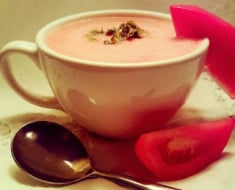When it comes to seafood delicacies, few can rival the delectable and luxurious taste of Maine lobsters. The succulent, sweet, and tender meat of lobster has delighted palates for centuries, earning it a place of honor on the menus of gourmet restaurants around the world. But what is it that makes Maine lobsters live taste so delicious? In this article, we will embark on a gastronomic journey to uncover the secrets behind the irresistible flavor of this coveted crustacean.
1. The Lobster’s Habitat Matters
Lobsters are found in a variety of habitats, from the cold waters of the North Atlantic to the warm waters of the Caribbean. Interestingly, the flavor of lobster is greatly influenced by its environment. Lobsters that inhabit colder waters tend to have a richer, more robust flavor due to their slower growth rate. The cold water helps the lobster develop a firmer texture and a more pronounced taste. Conversely, lobsters from warmer waters are known for their softer, milder meat.
2. Diet and Diet Variations
Lobsters are opportunistic feeders, scavenging on a diet that includes fish, crabs, clams, and even other lobsters. Their diet can significantly affect their taste. Lobsters that feast on a varied diet of marine life tend to have a more complex and nuanced flavor profile. Those that primarily consume a single type of prey may have a simpler taste.
Lobsters are particularly famous for their fondness for shellfish like clams and mussels. This shellfish diet can impart a sweet and briny undertone to their meat, contributing to the overall deliciousness.
3. The Magic of Molting
Lobsters are unique creatures in that they continue to grow throughout their lives. To accommodate their growth, they must periodically shed their exoskeleton in a process known as molting. This molting process allows lobsters to develop larger and more tender meat, enhancing their flavor. After molting, a lobster’s new shell is soft and delicate, making it especially sought after by seafood connoisseurs. Lobsters in this post-molt state are often referred to as “soft-shell” lobsters.
4. Cooking Techniques Make a Difference
The preparation and cooking of lobster play a pivotal role in bringing out its deliciousness. Different cooking methods can accentuate specific flavor aspects of lobster. Here are a few popular methods:
Boiling: Boiling lobster in seasoned water is a classic way to cook it. This method preserves the lobster’s natural flavor while infusing it with the taste of the sea.
Grilling: Grilled lobster, brushed with butter or olive oil and seasoned with herbs, enhances the crustacean’s smoky and charred notes.
Steaming: Steaming lobster is a gentle cooking method that retains the lobster’s tenderness and subtly enhances its sweetness.
Butter Poaching: Poaching lobster in butter or a buttery sauce is a decadent choice that enhances the natural richness of the lobster meat.
5. The Role of Lobster Anatomy
Lobster anatomy plays a significant role in its deliciousness. The tail meat, often considered the most prized part of the lobster, is succulent, sweet, and tender. The claws also offer tender and flavorful meat, while the body and legs can be used for making flavorful broths, bisques, and stocks.
6. Freshness is Key
One of the most critical factors in ensuring the deliciousness of lobster is freshness. Lobster is best enjoyed as close to the time of capture as possible. This is why coastal regions with active lobster fisheries are known for serving the freshest and most flavorful lobster dishes.
7. Seasonal Variations
Just like other seafood, lobster exhibits seasonal variations in taste. Lobsters caught during specific times of the year may have different flavor profiles due to changes in their diet, molting cycles, and water temperature. Many lobster enthusiasts eagerly await the start of lobster season to savor the best and freshest catches.
Conclusion:
The deliciousness of lobster is the result of a combination of factors, including its habitat, diet, molting process, cooking techniques, and anatomy. Understanding these elements can help you appreciate the complexities of lobster flavor and make the most of your lobster dining experience. So, the next time you indulge in this seafood delight, you’ll have a deeper appreciation for why lobster tastes so delicious.






